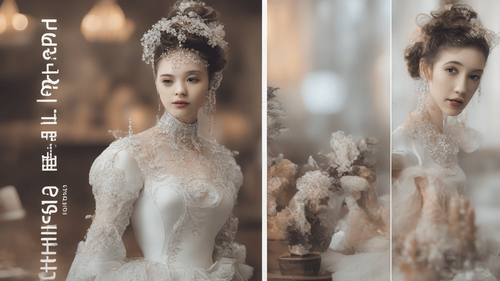
Introduction: The Power of AI in Picture Creation
In an era where technology is evolving at an astonishing pace, the fusion of artificial intelligence and creative expression has birthed a revolutionary tool - AI-powered picture creation. The concept of harnessing AI to craft captivating visuals might sound like something out of a sci-fi novel, but it's a reality that's transforming the way we produce and appreciate art. This article delves deep into the realm of creating pictures with AI, uncovering its techniques, tools, and its immense potential.
The Essence of AI in Image Generation
AI's Role in Image Creation: A Closer Look
AI, short for artificial intelligence, serves as the digital artisan behind the scenes, using advanced algorithms to generate images that range from photorealistic landscapes to abstract wonders. By analyzing vast datasets of existing imagery, AI systems can learn intricate patterns, textures, and styles that form the foundation of visual art.
AI vs Human Creativity: A Symbiotic Relationship
Contrary to concerns of AI replacing human creativity, it actually complements and amplifies it. AI acts as a wellspring of inspiration, helping artists transcend creative blocks and explore uncharted territories. It's not a rivalry; rather, it's a harmonious partnership where technology fuels human ingenuity.
Creating Pictures with AI: Tools and Techniques
1. GANs: The Creative Collaborators
Generative Adversarial Networks (GANs) stand at the forefront of AI-powered image creation. Consisting of a generator and a discriminator, GANs engage in a creative tug-of-war, producing images and refining them iteratively. This dance of creation and refinement births stunning visuals that often defy traditional artistic conventions.
2. Neural Style Transfer: Melding Masterpieces
Neural Style Transfer (NST) is an enchanting technique that melds two images, transferring the artistic style of one onto the content of another. Through deep neural networks, NST has bestowed the power to paint like Van Gogh, sculpt like Michelangelo, and infuse personal flair into every stroke.
3. Autoencoders: Crafting from Codes
Autoencoders, a subset of neural networks, encode images into compact representations and then decode them back into visuals. This intricate process paves the way for reconstructing images with alterations, generating unique variations, and even reviving ancient art forms with a modern twist.
The AI Palette: Colors, Styles, and Themes
1. Colors Through AI's Lens
AI's adeptness at comprehending color theories and harmonies elevates its ability to create pictures that resonate with emotion. By deciphering the psychology of colors, AI can evoke moods, tell stories, and craft visual narratives that captivate the beholder's senses.
2. Exploring Diverse Styles
From Cubism to Impressionism, AI isn't confined to a singular style. Its flexibility in emulating various artistic movements empowers creators to experiment with styles that span centuries, breathing life into old techniques and pioneering new artistic directions.
3. Theme Generation: The Storyteller's Partner
Themes, often the heart of visual storytelling, become enriched with AI's involvement. By analyzing narratives and context, AI can suggest themes that harmonize with the intended message, ensuring that every picture narrates a compelling story.
Frequently Asked Questions
How does AI-generated art compare to traditional art?
AI-generated art is a unique fusion of innovation and tradition. While it doesn't replace traditional art, it opens new avenues for creativity and artistic exploration. AI-generated art often surprises with its innovative take on classic techniques.
Can AI-created pictures evoke genuine emotions?
Yes, AI-created pictures can evoke genuine emotions. AI's ability to understand human psychology and the emotional impact of colors and compositions enables it to create visuals that resonate with viewers on a deep emotional level.
Do I need to be a tech expert to use AI for picture creation?
Not at all. Many AI-powered tools and software are designed with user-friendliness in mind. You don't need extensive technical knowledge to start creating pictures with AI. The technology is accessible and intuitive, welcoming both seasoned artists and newcomers.
Is AI the future of artistic expression?
AI undoubtedly plays a significant role in the future of artistic expression. It's expanding the horizons of creativity, pushing the boundaries of what's possible, and encouraging artists to explore uncharted artistic territories.
Are AI-created pictures considered original art?
Yes, AI-created pictures are considered original art. While the creative process involves AI algorithms, the artistic vision, intent, and personal touch of the creator remain integral to the final piece. AI is a tool that empowers artists rather than overshadowing their contribution.
Can AI-created pictures be used for commercial purposes?
Absolutely. Many artists and businesses utilize AI-generated images for commercial purposes, such as marketing campaigns, product designs, and branding. However, it's crucial to ensure compliance with copyright and licensing regulations when using AI-generated content.
Conclusion
In the realm of picture creation, AI emerges as a visionary ally, redefining artistic landscapes and empowering creators with tools that transcend traditional boundaries. The fusion of human imagination and AI's computational prowess promises a future where the canvas of creativity knows no limits. As you embark on your journey to create pictures with AI, remember that it's not just about the end result; it's about the immersive voyage of exploration, innovation, and self-discovery that AI embarks upon with you.